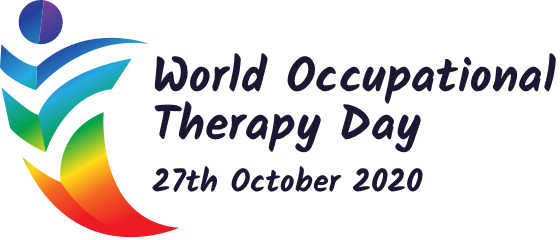World Occupational Therapy Day on 2020/27/10 - “Neurofeedback makes my work even more exciting”
In a growing number of occupational therapy practices, Neurofeedback is already established as a solid treatment method. However, many occupational therapists also doubt whether the “technical” neurofeedback fits into their everyday work. Being said, occupational therapists can even get some reimbursement from the health insurance and healthcare system for neurofeedback therapy in countries like Germany. In an interview, lecturer Thomas Theis reports what inspires him about neurofeedback, how neurofeedback can be integrated into occupational therapy and why occupational therapists in particular bring the perfect conditions for neurofeedback.
Thomas, why did you become an occupational therapist?
I have come through personal experiences for occupational therapy. Being younger, I suffered a complex injury to my arm – a disaster for me as a musician. I've been in treatment for a long time and have tried many therapies and found that occupational therapy really helped me. In occupational therapy, I was forced to use my arm again – not like in physiotherapy for stretching or exercises – but for real things - like darts, weaving or shuffle cards, that I enjoyed as a young person. I experienced a mind-changing moment: I realised that my condition will not improve if I do not use my hand and this knowledge has awakened my passion for occupational therapy.
What do you love about your profession?
There’s this saying, you also often find on coffee mugs “I‘ve become an occupational therapist because being a superhero isn’t a real job.”
For me, there is nothing missing in this profession. Occupational therapy is characterised by versatility, complexity and individuality. As an occupational therapist, I have to look at my patients with a mindful eye, I need to find out where problems exist and work together with them towards a solution or compensation of their problems. Not only are the patients making progress, but also one as an occupational therapist grows and develops at all levels. Occupational therapist is a meaningful and helpful profession that is incredibly fun. In addition, entrepreneurial independence has always been my big goal – managing my two practices to me is the fulfilment of this goal.
What are your biggest challenges at work?
At the moment, the relocation of my practices is the biggest logistical challenge, and the pandemic has, of course, also confronted us with problems, which we are managing through together. With a large team in practice, it never gets boring, we also have a long patient’s waiting list. Therapy continues and patients must be given full attention. The treatment of individual patients can also be challenging as for example I am currently combining neurofeedback and solution-oriented conversations in the treatment of a severely traumatised patient.
How can neurofeedback be integrated into occupational therapy?
Neurofeedback can be used in occupational therapy as a method of choice to achieve the medically prescribed therapeutic goal. A combination of neurofeedback with other therapeutic methods is also possible in order to help patients to sustainably improve their everyday competence. One has to remember, of course, that the individual neurofeedback procedures differ from each other. In my view, methods such as Infra Low Frequency (ILF) neurofeedback, which help to improve self-regulation, are particularly well suited. And I say this, knowing them very well. They help to sustainably improve everyday behavior and competences and, as a resource-related approach, are particularly suitable for occupational therapy. I now use neurofeedback for many indications. Also patients are very interested in the method.
Do occupational therapists bring the right conditions for neurofeedback training?
Thomas: From my point of view, occupational therapists bring the perfect conditions for neurofeedback. Especially in symptom-based ILF neurofeedback, clinical observation of the patient’s state and behavior is very important. You have to pay particular attention to body physiology, breathing and mimic in order to detect signs of for example tension and relaxation,to adapt the treatment protocol accordingly. Occupational therapists are usually very trained in clinical observation and therefore a very important professional group in neurofeedback.
What would you advise occupational therapists that consider working with neurofeedback?
My advice for occupational therapists who want to offer neurofeedback is: Pay attention to a good and well-founded training, start slowly and try it out before you start treating complex cases . Take advantage of further education and training like advanced courses - as well as supervision with experienced colleagues.
Neurofeedback is an instrument that can make your everyday work in practice even more exciting. Colleagues, who have been initially concerned about technical devices in therapy, also like to work with neurofeedback now. It also keeps the therapist mentally fit and awake because you constantly keep an analytical view of the patient and have to register small physiological changes quickly. Working with neurofeedback is a lot of fun for me and I also know many colleagues who are excited by neurofeedback and offer it as a solid treatment along the other existing therapy methods in occupational therapy.
Learn more about Thomas Theis from his lecturer profile on EEGInfo
The interviewer was Jennifer Riederle, Psychologist at BEE Medic

